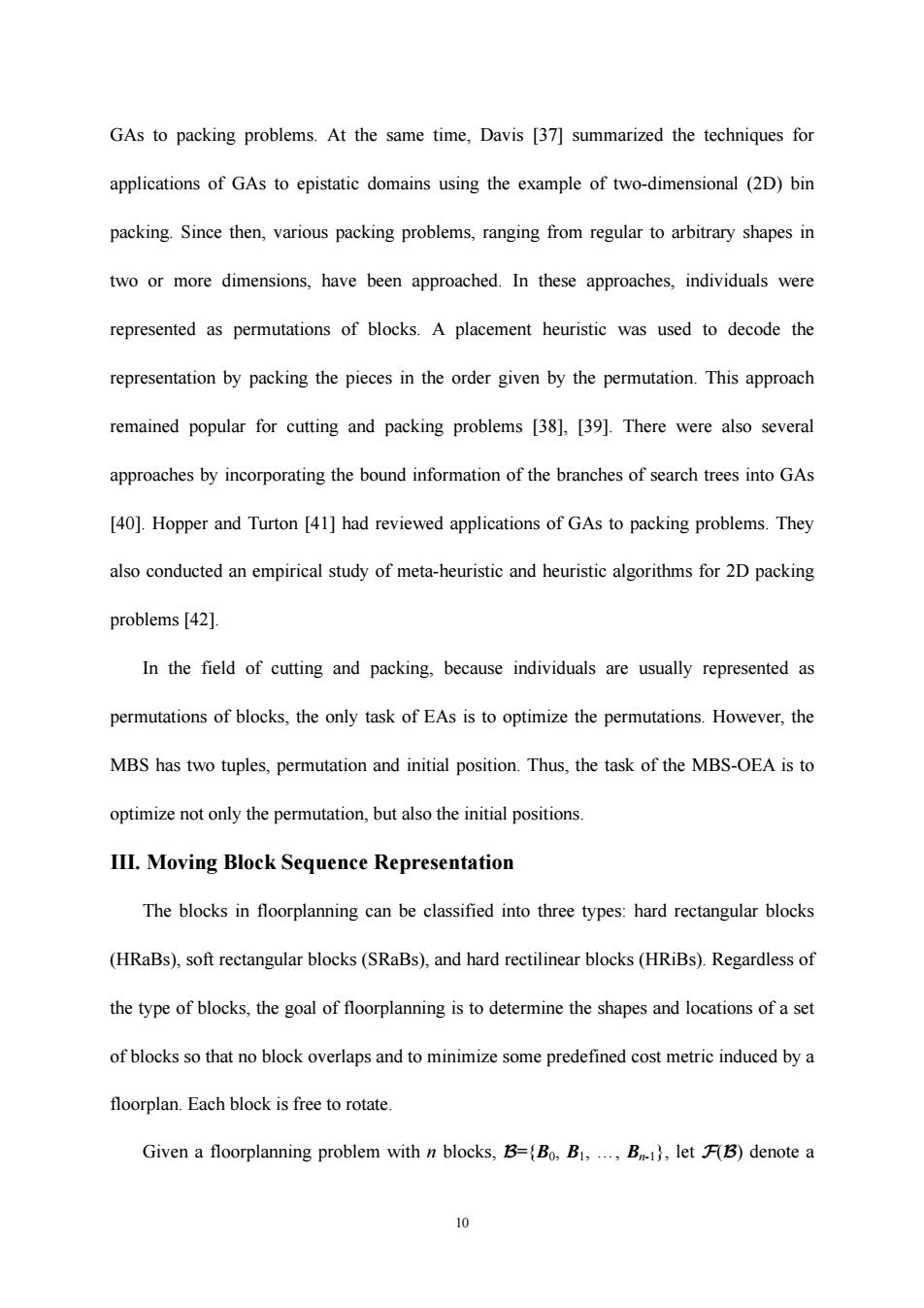正在加载图片...

GAs to packing problems.At the same time,Davis [37]summarized the techniques for applications of GAs to epistatic domains using the example of two-dimensional (2D)bin packing.Since then,various packing problems,ranging from regular to arbitrary shapes in two or more dimensions,have been approached.In these approaches,individuals were represented as permutations of blocks.A placement heuristic was used to decode the representation by packing the pieces in the order given by the permutation.This approach remained popular for cutting and packing problems [38],[39].There were also several approaches by incorporating the bound information of the branches of search trees into GAs [40].Hopper and Turton [41]had reviewed applications of GAs to packing problems.They also conducted an empirical study of meta-heuristic and heuristic algorithms for 2D packing problems [42]. In the field of cutting and packing,because individuals are usually represented as permutations of blocks,the only task of EAs is to optimize the permutations.However,the MBS has two tuples,permutation and initial position.Thus,the task of the MBS-OEA is to optimize not only the permutation,but also the initial positions. III.Moving Block Sequence Representation The blocks in floorplanning can be classified into three types:hard rectangular blocks (HRaBs),soft rectangular blocks(SRaBs),and hard rectilinear blocks(HRiBs).Regardless of the type of blocks,the goal of floorplanning is to determine the shapes and locations of a set of blocks so that no block overlaps and to minimize some predefined cost metric induced by a floorplan.Each block is free to rotate. Given a floorplanning problem with n blocks,B=(Bo,B1,...,B1),let F(B)denote a 1010 GAs to packing problems. At the same time, Davis [37] summarized the techniques for applications of GAs to epistatic domains using the example of two-dimensional (2D) bin packing. Since then, various packing problems, ranging from regular to arbitrary shapes in two or more dimensions, have been approached. In these approaches, individuals were represented as permutations of blocks. A placement heuristic was used to decode the representation by packing the pieces in the order given by the permutation. This approach remained popular for cutting and packing problems [38], [39]. There were also several approaches by incorporating the bound information of the branches of search trees into GAs [40]. Hopper and Turton [41] had reviewed applications of GAs to packing problems. They also conducted an empirical study of meta-heuristic and heuristic algorithms for 2D packing problems [42]. In the field of cutting and packing, because individuals are usually represented as permutations of blocks, the only task of EAs is to optimize the permutations. However, the MBS has two tuples, permutation and initial position. Thus, the task of the MBS-OEA is to optimize not only the permutation, but also the initial positions. III. Moving Block Sequence Representation The blocks in floorplanning can be classified into three types: hard rectangular blocks (HRaBs), soft rectangular blocks (SRaBs), and hard rectilinear blocks (HRiBs). Regardless of the type of blocks, the goal of floorplanning is to determine the shapes and locations of a set of blocks so that no block overlaps and to minimize some predefined cost metric induced by a floorplan. Each block is free to rotate. Given a floorplanning problem with n blocks, B={B0, B1, …, Bn-1}, let F(B) denote a